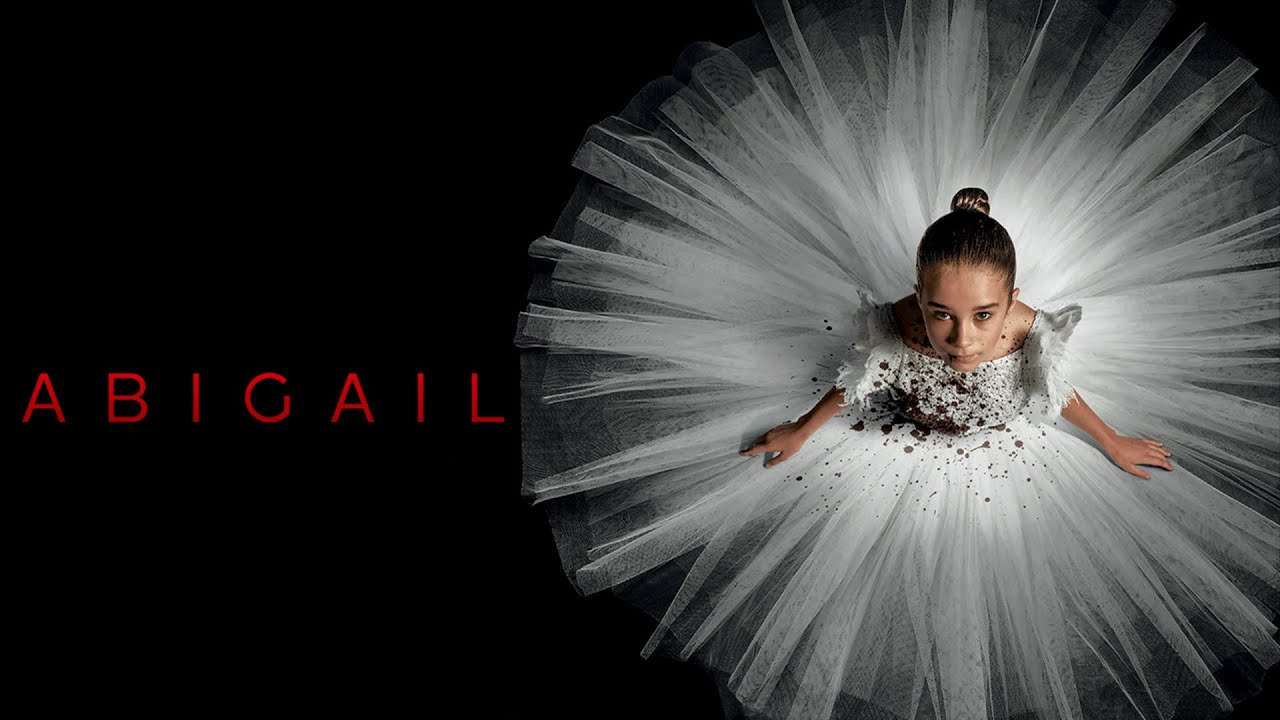Kerry Brougher, Director of the Academy Museum of Motion Pictures, today announced the details of the inaugural exhibitions that will be on view when the Museum opens in late 2019.
The first institution of its scope and scale devoted to the past, present, and future of cinema, the Academy Museum will open with a long-term exhibition that explores the evolution of film from its beginnings to its possible futures. Where Dreams Are Made: A Journey Inside the Movies (working title) will occupy two floors of the Museum’s iconic Saban Building—formerly known as the May Company building—and looks at the development of the art and science of motion pictures. Brougher also announced the institution’s first temporary exhibitions. The Museum will open with Hayao Miyazaki (working title), presented in collaboration with the filmmaker’s Studio Ghibli—the first major exhibition of his work presented in the United States.
This exhibition will be followed by Regeneration: Black Cinema 1900–1970 (Fall 2020), a groundbreaking exhibition that reveals the important and under-recognized history of African-American filmmakers in the development of American cinema. It will explore African-American representation in the motion picture from its advent to just beyond the Civil Rights era. The Museum’s 34-foot-high project space will open with a major work by the Tokyo-based interdisciplinary art collective teamLab. Additional exhibitions will include Making of: The Wizard of Oz, featuring elements that contributed to the creation of this iconic film, a history of the Academy Awards, and an Oscars experience.
Kerry Brougher said, “We want the Academy Museum to add to the public’s understanding of the evolution of the art and science of filmmaking around the world—to increase appreciation for this great art form and encourage people to examine the role of movies in society. At the same time, we want to bring to life the most important reason of all for caring about the movies—because they’re magic. That’s why we intend to transport our visitors into a world that exists somewhere between reality and illusion. Like the experience of watching a movie, a trip to the Museum will be a kind of waking dream in which visitors feel as if they’ve slipped through the screen to see how the magic is created.”
Ron Meyer, Chairman of the Board of the Academy Museum and Vice Chairman of NBCUniversal, said, “The Trustees and I are tremendously proud to see how the exhibitions of the Academy Museum are coming together. Thanks to the extraordinary creative team that Kerry has assembled, these experiences are going to be beautiful and engaging, thoughtful and surprising. The art of film, and our new Academy Museum, deserve nothing less.”
Dawn Hudson, CEO of the Academy of Motion Picture Arts and Sciences, said, “It’s been 90 years since the founders of the Academy proposed creating a museum of film in Los Angeles. How thrilling to be able to deliver on that dream. The Museum’s exhibitions are as expansive and imaginative as the movies we love. With its piazza and open spaces, the Museum will be a gathering place for film lovers and will invite people from all over the world to re-experience and deepen our collective love of this art form, accessible to all.”
John Bailey, President of the Academy’s Board of Governors, said, “The Academy Museum is the realization of a long-held Academy dream to preserve movie history and to bring it into the lives of filmmakers, scholars, young people, and the worldwide public. The great resources and dedicated work of the Margaret Herrick Library and the Academy Film Archive provide a foundation for the Museum’s extraordinary installations and changing exhibitions. This Museum, created and supported by working filmmakers, will present the story of the movies in ways beyond what a traditional historical film museum can offer.”
WHERE DREAMS ARE MADE: A JOURNEY INSIDE THE MOVIES
The Museum has set several interpretative goals for its exhibitions and programs: to convey the emotional and imaginative power of film, to offer visitors a look behind the screen into how movies evolved and are made, to explore the impact of cinema on our society and the culture at large, and to ensure film’s legacy as the great art form of our time.
Where Dreams Are Made will unfold over 30,000 square feet on two floors of the Museum. It brings together evocative settings, key objects from the Academy’s unparalleled collections and the growing collection of the Museum itself, and an array of film installations.
The journey begins in the Spielberg Family Gallery, located in the Grand Lobby, with the installation Making of: The Wizard of Oz. This classic 1939 film is notable for its engaging story, groundbreaking effects, glorious Technicolor world, original musical score—in particular the exquisite voice of Judy Garland—and a cast of unforgettable characters. Visitors will experience the magic of the movie and explore the process of its creation, from the script to production design drawings and sketches, costumes, and hair and makeup tests to the final versions of the characters themselves. It is here that Dorothy’s famed ruby slippers from the Museum’s collection will be found. Finally, evidence of this film’s everlasting impact illustrates the impressive legacy of The Wizard of Oz in popular culture.
Visitors will then ascend to the Wanda Gallery on the second floor, where they will enter a corridor that acts as a transition from the real world into the dream-space of cinema. They will emerge into the dramatic Magic and Motion gallery, which evokes the age of innovation and wonder in the 19th century during which inventors created optical illusions and animations with devices that delighted audiences by making still images move and light up, bringing scenes and tales to life.
The Lumière and Méliès gallery introduces a central theme of the exhibition—the interplay in cinema between realism and fantasy—as seen in the work of the brothers Louis and Auguste Lumière on one hand, and Georges Méliès on the other. Visitors will experience some of the earliest films ever projected, brief glimpses of daily life that were the forerunners of today’s documentaries and travelogues with which the Lumière brothers astonished audiences all over the world. The delightful “trick” films and dazzling moving image fantasies of stage-magician-turned-filmmaker Méliès prefigured the limitless potential of cinematic imagination even as the medium was still in its infancy.
The Story Films gallery inside the restored iconic golden cylinder of the Saban Building will demonstrate how filmmakers around the world quickly developed camera and editing techniques that unleashed this new medium’s potential to tell stories. Visitors will see examples of the first dramas, comedies, adventures, and other genres created for the screen, as well as the first animated short films. Women played significant roles both in front of and behind the camera during this period, and this gallery’s focus on early pioneers such as Alice Guy-Blaché and Lois Weber will not only explore their stories but also survey an industry in the process of being born.
Visitors will then enter a maze of monumental screens in the Light and Shadow gallery, which features sequences from the heyday of international silent film, revealing how inventive production design, acting styles, cinematographic effects, and lighting techniques brought mood, atmosphere, and emotion to cinema, elevating it to an art form and entrancing audiences around the world.
In the Modern Times section, visitors will encounter three simultaneous moments in cinema history that demonstrate moviemakers’ ability to respond to and impact society. The first was the rise of Hollywood and powerful stars like Mary Pickford and Charlie Chaplin, larger-than-life figures who often created identifiable, sympathetic representations of the “everyman.” The second was the artistic and political eruption of Soviet cinema, particularly advances in editing and montage pioneered by Sergei Eisenstein and Dziga Vertov, who used innovative approaches to capture the drama of daily life. The third was the development of independent filmmaking in America, which sought to counter the stereotypes often created by Hollywood, including films starring all-Black casts, predominantly distributed to Black audiences—otherwise known as “race films”—and production companies formed by notable filmmakers like Oscar Micheaux, Sessue Hayakawa, and Beatriz Michelena.
Modern Times leads visitors to the largest of the second-floor galleries, The Studio System, which follows the bustle of the Hollywood assembly line from the advent of synchronized talking pictures in 1927 to the decline of the studio system in the 1960s. This gallery explores the fascinating dichotomy of the era: the “dream” of Hollywood spectacle and the “factory” that made it possible. Here, objects from the Academy’s collection, such as a backdrop from Singin’ in the Rain (1952), the doors to Rick’s Café Américain from Casablanca (1942), and the typewriter used to write Alfred Hitchcock’s Psycho (1960), as well as familiar faces and scenes from the movies themselves will bring to life the myriad people and departments that came together to create studio movies of the time. Visitors will journey through the studio to explore the artistry and also the challenges of Hollywood during its “golden age.” This gallery also highlights many of the era’s most unforgettable stars, from the dancing talents of Fred Astaire, the Nicholas Brothers, and Rita Moreno to the dramatic presence of Humphrey Bogart, Gregory Peck, and Sidney Poitier, and icons of the screen like Greta Garbo, Dolores del Rio, and Marilyn Monroe.
As visitors move to the Museum’s third floor Rolex Gallery, they will enter into the Real World. This space will reveal how filmmakers responded to the tensions and challenges of a world changed by World War II. As filmmaking techniques became more and more adaptable, with lighter-weight and more widely available equipment, filmmakers everywhere took to the streets to capture their version of reality and share slices of life on screen. Whether creating fiction films or documentaries, they helped record and shape our history. Visitors will also encounter the rapid growth of independent cinema and the individual expression that characterized movements from Italian Neorealism and French New Wave to Indian Parallel Cinema and Brazilian Cinema Novo. But this is not only a story of the past: such approaches continue to impact and influence filmmaking to the present day.
An homage to the Stargate Corridor sequence from Stanley Kubrick’s 2001: A Space Odyssey (1968)—a sequence that brought together experimental film techniques and mainstream cinema—creates a mind-bending passageway to the final section of the exhibition: Imaginary World. With the advent of new tools and technologies, cinematic visions are now limited only by the filmmaker’s imagination. Visitors will be transported to unfamiliar worlds of the past, present, and future to encounter many of the most memorable and beloved movie characters, creatures, and destinations and to hear from the filmmakers themselves how they have pushed the boundaries of filmmaking to make the impossible possible. These films, despite their imagined lands and inhabitants, often provide a mirror that urges us look at ourselves and our own world in new ways.
An endeavor of this scope requires a multi-disciplinary creative team, such as the one assembled under the curatorial leadership of Kerry Brougher and Deborah Horowitz, Deputy Director of Creative Content and Programming. Intrinsic to the development of the vision for Where Dreams Are Made is Rick Carter, Oscar-winning production designer for Avatar (2009) and Lincoln (2012). The creative team for the exhibition includes the Museum’s curatorial staff—Doris Berger, Acting Head of Curatorial Affairs; Jessica Niebel, Exhibitions Curator; Bernardo Rondeau, Associate Curator and Head of Film Programs; J. Raul Guzman, Assistant Curator; Dara Jaffe, Assistant Curator; Robert Reneau, Film Program Coordinator; and Ana Santiago, Assistant Curator—as well as producer Brooke Breton, Avatar; sound designer Ben Burtt, Star Wars: Episode IV (1977), E.T. The Extra-Terrestrial (1982); staff from the Academy’s Margaret Herrick Library and Academy Film Archive, Academy governors and members, the Museum’s advisory committee on inclusion, and a range of film scholars and filmmakers. Gallagher & Associates, specialists in interpretive and experience design, are bringing their expertise to the project in order to realize the design and installations.
ACADEMY AWARDS HISTORY AND OSCARS EXPERIENCE
Since 1929, the Academy Awards have been the ultimate recognition of moviemaking excellence. Originally a dinner for industry insiders only, the ceremony has gradually become a global phenomenon watched by millions around the world. Visitors can trace the rich history of the Academy Awards and the story of the Oscar in an exhibition that includes favorite highlights, memorable winners’ speeches, private backstage moments, and rarely seen materials from the Academy’s collection. The exhibition will look back at the show, its glamour as well as its controversies, and the ways in which the Academy Awards ceremony has evolved and been a mirror of our culture. Visitors will then enter a gallery offering an Oscars experience only the Academy can provide, allowing visitors their own photo opportunity and Oscar moment.
TEMPORARY EXHIBITIONS
The Academy Museum will also feature a robust schedule of rotating temporary exhibitions in the fourth floor’s Marilyn and Jeffrey Katzenberg Gallery. These exhibitions will include retrospectives of major filmmakers, focused studies on aspects of filmmaking, artists’ projects, and explorations of the way movies reflect and influence society.
The Academy Museum’s opening temporary exhibition will be an unprecedented U.S. retrospective of famed Japanese filmmaker Hayao Miyazaki, curated by Jessica Niebel in collaboration with Studio Ghibli. Celebrated and admired around the world for his imagination, authorial vision, craftsmanship, and deeply humanistic values, Miyazaki continues to influence generations of filmmakers and film lovers. The exhibition will take visitors on a thematic journey through his cinematic worlds using original production materials from Studio Ghibli’s archives and features such films as My Neighbor Totoro (1988) and Spirited Away (2001). The exhibition will present more than 200 concept sketches, character designs, storyboards, layouts, cels, backgrounds, film clips, and immersive environments. A catalogue, film series, and public events will accompany the presentation, and unique Studio Ghibli merchandise will be sold at the Museum’s shop.
In the Museum’s Hurd Gallery—a 34-foot-high project space dedicated to the work of contemporary artists and filmmakers pushing the boundaries of moving image media—will be a dramatic interactive installation by teamLab, curated by Kerry Brougher and Deborah Horowitz. teamLab is an interdisciplinary art collective based in Tokyo comprising more than 500 artists, programmers, engineers, CG animators, mathematicians, and architects. Transcending Boundaries presents a site-specific, real-time, ever-changing environment that allows the viewer to engage directly with the artwork itself. teamLab’s work looks toward the expanded possibilities of moving image and digital technology.
Following Hayao Miyazaki, the Academy Museum will present Regeneration: Black Cinema 1900-1970 in Fall 2020. Regeneration will explore the visual culture of Black cinema in its manifold expressions from its early days to just beyond the Civil Rights movement. Co-curated by Doris Berger and Rhea Combs, Supervisory Curator of Photography and Film at the Smithsonian’s National Museum of African American History and Culture (NMAAHC), it will be the first exhibition of its kind—a research-driven, in-depth look at Black participation in American filmmaking.
In addition to offering a critical exploration of Hollywood productions, Regeneration will highlight the work of independent African-American filmmakers and create dialogues with visual artists. The exhibition’s goal is to redefine American film history as it elevates this under-represented aspect of artistic production and presents a more inclusive story. Regeneration is the proud recipient of the Sotheby’s Prize. The Sotheby’s Prize is an annual award that supports and encourages museums to break new ground. The grant aims to recognize curatorial excellence, and to facilitate exhibitions that explore overlooked or under-represented areas of art history. The Sotheby’s Prize is awarded by a jury comprising Sir Nicholas Serota, Donna De Salvo, Okwui Enwezor, Connie Butler, Emilie Gordenker, and chaired by Allan Schwartzman.
Regeneration’s curatorial team is collaborating with an advisory panel throughout the development of the exhibition. The panel brings expertise and experience deeply rooted in scholarship and filmmaking and includes Charles Burnett, filmmaker, Academy member; Ava DuVernay, filmmaker, Academy member; Michael B. Gillespie, Associate Professor, The City College of New York, Department Media Communication Arts; Shola Lynch, Curator, New York Public Library, Schomburg Center for Research in Black Culture, filmmaker, Academy member; Ron Magliozzi, Curator of Film, The Museum of Modern Art; Ellen C. Scott, Associate Professor and Head of Cinema and Media Studies, UCLA School of Theater, Film, and Television; and Jacqueline N. Stewart, Professor, The University of Chicago, Department of Cinema and Media Studies.
To encourage visitors to explore, dive deeper, and directly interact with exhibitions, collections, filmmakers, and fellow film lovers, the Museum’s public programs will include panel discussions, symposia, gallery talks, and other public events. The 288-seat Ted Mann Theater will offer daily thematic and exhibition-related screenings, and special showings and events will be held at the 1,000-seat David Geffen Theater. Film programming is overseen by Bernardo Rondeau. In addition, the Museum will offer an innovative range of digital engagement platforms and interactives, including a groundbreaking app.
Additional information about Hayao Miyazaki, Transcending Boundaries, Regeneration, and the Museum’s public programs and film screenings will be announced at a later date.

Movie
‘Abigail’: Bite Me Harder Tiny Dancer

A gang of misfit kidnappers find their tiny target far more bloodthirsty than they bargained for!
So, unfortunately, the trailers gave it away and let’s be real that’s why most of us are here, the knowledge that the kidnap victim Abigail (Alisha Weir), codenamed by the would-be kidnappers appropriately as ‘tiny dancer’, is in fact, a vampire. Not a spoiler, point of fact, one of the film’s actual great selling points. And the reactions from the misfit club when faced with a real actual f*cking vampire, range hilariously from the blunt “no such thing as vampires” all the way to, “Are we talking True Blood or Twilight rules or what?” all while covered in buckets and buckets of blood.
Anyway, the gang manages to subdue and abscond with the aforementioned Abigail, in a pre-prepared duffle bag, like you do, and converge to a new location, a house oddly similar to the one she was just taken from. Welcomed and given codenames by a man who introduces himself as Lambert (Giancarlo Esposito), our misfit club is told to simply hold down the fort in this strange old house with the girl chained up in a room and one person to attend her, for twenty-four hours, and they’ll all get paid.
As inevitable as the tides, the dopey druggie Dean (Angus Cloud) is the first to die, and we’re going to give that death-style points for inspiring terror right off the bat. The very controlling Frank (Dan Stevens, holy crap yes that is the guy from FXs Legion) is also of course the most suspicious – of everyone around him, sure, but also he himself is totes sus. We don’t learn terribly much about the musclebound tank who gets dubbed Peter (Kevin Durand), he’s your pretty typical little-brains-heart-of-gold muscle-for-hire any proper gang needs, right down to the bottle problem. Sammy (Kathryn Newton), well, even for being a purported hacker-type, she has, like, reality issues. Rickles (William Catlett), he’s arguably the most dangerous among them, ex-military and yet somehow here and involved in kidnapping for a few mills. Joey (Melissa Barrera) is our Final Girl, and though she has the inevitable problems in her recent past, she seems more capable of doing the hard thing and still somehow empathizing at the end of the day. Must be her burning desire to get back with her son.
The fit hits the shan pretty quickly, and Abigail morphs from tiny dancer to tiny monster, though honestly, the way Abigail spoke the entire time in the film, if the ‘nappers had been paying close enough attention, would have been a solid clue. The performance from Alisha Weir as Abigail is incredible, as she literally dances a fine line between comedy, tragedy, and outright monstrosity. With a face full of makeup and the force of a tiny tornado to back it up, Weir brings to mind the great performances of the vampires in 30 Days of Night who saw the practicality in the need to trap their food, but also, play with it a bit first before feasting! Anything else would give away the absolute fun time that is Abigail, so you should go see it, out in theaters now!
TV
Scrubs Reunion: The Band Gets Back Together

Fans of the beloved medical comedy series Scrubs were recently treated to a thrilling surprise when John C. McGinley, who portrayed the iconic Dr. Perry Cox, dropped a photo on Twitter hinting at a potential reunion project. The image, showing McGinley alongside his former co-stars, sparked a wave of excitement and speculation among fans who have been longing for more adventures with the beloved Sacred Heart Hospital staff.
While details about the reunion project are still scarce, the mere possibility of seeing the gang back together again has sent waves of nostalgia through fans who fondly remember the show’s original run from 2001 to 2010. Scrubs was not just a sitcom; it was a heartfelt exploration of friendship, love, and the chaotic world of medicine, all wrapped up in a quirky and often hilarious package.

At the heart of the show was the bromance between JD (played by Zach Braff) and Turk (played by Donald Faison), whose antics and deep bond served as the emotional anchor for the series. Their dynamic, along with the sage wisdom (and relentless sarcasm) of Dr. Cox, provided viewers with memorable moments that have stood the test of time.
As we eagerly await more news about the Scrubs reunion project, one thing is for sure: it’s time to dust off those old DVDs, rewatch our favorite episodes, and get ready to welcome back our favorite gang of doctors, nurses, and janitors for what promises to be a memorable reunion.
But Scrubs was more than just its main characters. The supporting cast, including the eccentric Janitor (played by Neil Flynn), the neurotic Elliot (played by Sarah Chalke), and the wise-cracking nurse Carla (played by Judy Reyes), each brought their own unique flavor to the show, creating a rich tapestry of characters that fans grew to love.
While the photo shared by McGinley has fueled speculation about what the reunion project might entail, whether it’s a one-off special, a new season, or something else entirely, one thing is certain: fans are eagerly awaiting any opportunity to dive back into the world of Sacred Heart Hospital.
In an age where reboots and revivals are commonplace, Scrubs stands out as a series that has the potential to recapture the magic that made it a fan favorite in the first place. With its blend of humor, heart, and unforgettable characters, a reunion project has the opportunity to not only satisfy longtime fans but also introduce a new generation to the joys of life at Sacred Heart.
Streaming
‘The Hunger Games: The Ballad of Songbirds and Snakes’: Rebellion with a cause

The story of the rise of Coriolanus Snow, from teenage Capital City pawn to rising Dictator of the Hunger Games!
Apparently no one out here in post-apocalyptic Panem has heard of irony and so they name their children things like Coriolanus (Tom Blyth), Tigress, and further off in Hunger Games lore, after swamp plants like Katniss. Corio’s father was a legendary general and that is pretty much the only reason young Snow and his meager family of grandmother called Grandma’am (Fionnula Flanagan) and sister Tigress (Hunter Schafer) are tolerated here in the Capital City at all.
Most of the snotty youngsters at the academy won’t let Snow forget how far his family has fallen, but he’s generally not concerned with them. What is concerning is the strong disapproval of the drugged-up Dean Casca Highbottom (Peter Dinklage) and the creepy attention of Dr. Volumnia Gaul (Viola Davis) as she lurks in the classroom sniffing out talent. The Dean feels very strongly the annual Hunger Games should end, while Gaul is violently adamant that not only do the Games continue, but that they get as much more attention as possible. And young Snow is stuck in the middle, when the yearly prize money normally awarded to the academy student with the best grades gets switched out for, you guessed it, the student that can make this years’ Hunger Games as entertaining as possible.
Whilst the students are protesting this sudden change, the annual Reaping is about to commence, and big shock and surprise, Corio’s candidate from District 12 Lucy Grey Baird (Rachel Zegler) is chosen as a Tribute. This is where the film begins to really take off on musical wings, for as it turns out, Lucy Grey can sing. Boy, can that gal sing! She can sing, she can play guitar, she can work a crowd, she can calm things down, she can fire ‘em up too! And Corio, being no dummy himself, instantly plots ways to use his Tributes amazing voice to draw attention to her, and admittedly his own, plight!
Though far too many people sneer at the idea, Corio takes his position as Mentor to his Tribute seriously enough to sneak onto the tram taking the Tributes to their habitat, which turns out to be a completely appropriate moniker, as this year the Tributes are held before the Hunger Games in a large zoo habitat so the weatherman ‘Lucky’ Flickerman (Jason Schwartzman), host of this years games, can MC the hell out of everything up close and personal!
What happens at this years Hunger Games and the subsequent consequences to both Corio and Lucy Grey is actually only half the story, and the movie. Coriolanus has always had to be opportunistic, but learning to be absolutely ruthless when necessary under the tutelage of Dr. Gaul, who basically thinks it’s always best to be merciless, is an eye-opening education indeed. Even after they’ve both been consigned to military service and his friend Sejanus Plinth (Josh Andres Rivera) decides to finally rebel, Corio and Sejanus continue to deceive each other and themselves, to accomplish their separate goals. Not even the love Corio swears he feels for Lucy Grey can save him, or them, from the adamant absolute necessity of the Hunger Games continuing. And after all that’s happened, Coriolanus Snow has gotten a terrific education in the best way to be the absolutely ruthless next Hunger Games advocate, and oh yeah, President of Panem.
The movie does itself no favors by trying to stuff not one but two major storylines and a bunch of side storylines sadly introduced and then ignored, into the film. It would have been entirely possible to turn Ballads of Songbirds and Snakes into two different movies, separated between feathers and scales if you like, and do justice to the major storylines in both. Blyth gives a fine performance as a young Coriolanus Snow, but the fact that President Snow is played by Donald Sutherland in all three of the Hunger Games films means Blyth has incredibly large shoes to fill. Rachel Zegler as Lucy Grey is absolute fire, and yes the actress did sing the songs in the film herself, including the Hunger Games franchise epic song, ‘The Hanging Tree’. Every time Lucy Grey opens her mouth and sheer soul-searing music comes out, it provides a distinct counterpoint to the soul-crushing ambition of Coriolanus Snow and further demonstrates the District and Caste separation Hunger Games is known for. And if, by the end of the film, Coriolanus Snow has come to agree that the Hunger Games must continue but perhaps under his own auspices, he has no one but himself to blame when another younger but still rebellious female blows it all up in his face!
Choose rebellion or conformity for yourself in The Hunger Games: The Ballad of Songbirds and Snakes!


